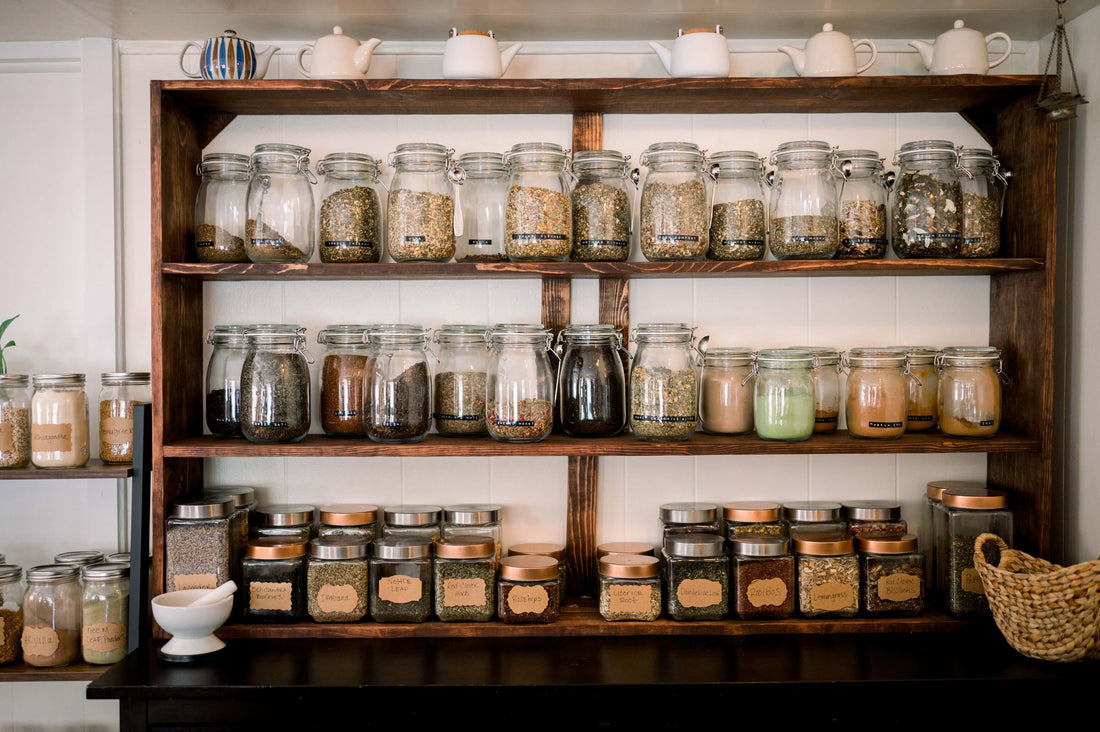
Herbalism Basics: Learning About Plant Medicine
Share
Herbalism Basics: Learning About Plant Medicine
Herbal medicine is one of the oldest forms of healing in the world and has been used by cultures all over the globe for centuries. In recent years, there has been a resurgence of interest in herbalism and plant medicine. Many people are turning to herbs to support their health and wellbeing in a natural way. If you're curious about learning more about herbalism, this blog post will give you a basic introduction to the topic. We'll cover some of the history and traditional uses of herbs, as well as how you can get started using them yourself. So, whether you're a Witch looking to deepen your knowledge of plant magic or just interested in exploring natural remedies, read on for everything you need to know about herbalism basics!
What is herbalism and what are its benefits?
Herbalism is an ancient practice that dates to infancy of civilization. It involves the use of plants and herbs to maintain good health, either using herbal recipes or simply by consuming herbs themselves. Herbal remedies are used to strengthen the immune system, improve overall health, treat specific organs and ailments, or induce relaxation. These remedies can be prepared as teas, tinctures, salves, oils and more. While herbalism is not a substitute for medical care in serious cases, it can provide natural relief from mild discomfort in many areas. Additionally, it utilizes tools from nature that have been around long before modern medicine. As such many people find comfort in its approach as promoting a holistic lifestyle rather than relying solely on synthetic treatments.
The different forms of plant medicine
Plant medicine has been around for centuries, used by many cultures throughout history to treat a variety of ailments. Today, plant-based remedies can be found in traditional forms such as teas and tinctures, as well as in the form of oils and salves. Plant-based formulas are also often used to make balms and creams that help to soothe skin irritation. There is a seemingly endless array of natural ingredients available, ranging from roots and herbs to fruit and vegetables. Whatever the need may be, plant medicine has something suitable to offer. In recent years there has been a resurgence of interest in these ancient remedies, leading more people than ever to consider using them as an alternative form of healing.
How to prepare and administer herbal remedies
Preparing and administering herbal remedies can be an effective approach to health care. It is important to research any herbs that you plan to take so that you are sure of their safety as well as their potential benefits. Always consult a medical professional before taking any herbal remedy, as they may interact with medications or underlying health conditions. Once you have chosen the right herbs for your needs, you can then decide how to access them. Different preparation methods include teas, tinctures, and ointments, among others. Alongside researching each herb’s benefits, it’s also wise to look into the recommended dosage. This helps ensure that the remedy is taken safely and in a way that maximises its effectiveness. Ultimately, if you commit to learning about herbal remedies and their various preparations, this ancient practice can become an integral part of your holistic approach to health care.
Some common herbs and their uses
Herbs are incredibly versatile and can be used to flavor both savory and sweet dishes, while providing a range of additional health benefits. Basil, sage, oregano, and thyme are among the most used herbs in cuisines all around the world. Each of these herbs have unique flavors that add depth to any dish. Basil is known for its herbal sweetness and is often used in classic Italian dishes. Sage offers a distinct savory flavor and is excellent as an accompaniment for chicken, pork, and fish. Oregano provides a rustic touch with its slightly spicy taste, making it perfect for hearty stews. Finally, thyme has subtle citrus undertones which makes it ideal for adding brightness to salads or vegetables. Incorporating these herbs into your cooking can make a substantial difference in the overall taste of your dishes!
How to find a reputable source for quality herbs
There are a few things to look for when trying to find a reputable source for quality herbs. First, make sure that the source is knowledgeable about herbs and can answer any questions you have. Second, check to see if the source carries a wide variety of herbs. Third, ask around for recommendations from people you trust.
Basics to get you started
Herbalism is a lifelong learning process that requires patience, practice, and dedication. As you continue to learn and grow, you will develop a deeper understanding of plant medicine and its potential to support health and well-being. Here are some basics to help you get started with herbalism:
Familiarize yourself with common medicinal herbs: Begin by learning about the properties, uses, and contraindications of common medicinal herbs such as chamomile, lavender, ginger, garlic, and peppermint. Research their benefits, potential side effects, and any interactions with medications or medical conditions.
Understand herbal preparations: There are various ways to prepare and use herbs for medicinal purposes, including teas, tinctures, poultices, salves, and essential oils. Learn about different preparation methods and their appropriate uses for various conditions.
Grow your own herbs: Cultivate a small herb garden to deepen your connection with plants and to have fresh, organic herbs readily available for use. Start with easy-to-grow herbs like basil, mint, and calendula.
Learn proper harvesting and storage techniques: Familiarize yourself with the best time and method to harvest each herb, as well as how to dry and store them to preserve their medicinal properties.
Study anatomy and physiology: Understanding human anatomy and physiology will provide a foundation for understanding how herbs can support the body's systems and functions.
Gain knowledge of herbal actions: Herbs can have various effects on the body, such as being a diuretic, anti-inflammatory, or sedative. Learn about these herbal actions to better understand how herbs can be used for specific conditions.
Identify contraindications and interactions: Some herbs may have contraindications or interact with medications, making it important to be aware of potential risks and consult with a healthcare professional when necessary.
Practice making herbal remedies: Start by making simple herbal remedies, such as teas and infusions, and gradually progress to more complex preparations like tinctures and salves.
Keep a record: Document your learning journey, including information on herbs, their uses, and any remedies you've made or tried. This will serve as a valuable resource for future reference.
Learn from reputable sources: Seek out reputable books, courses, and mentors to expand your knowledge and ensure that you are learning from accurate, evidence-based sources.
Connect with the herbalism community: Join local or online herbalism groups to share knowledge, experiences, and resources with other like-minded individuals.
Herbalism is a time-honored tradition that has many benefits. If you are interested in trying herbal remedies, there are several things you should keep in mind. First, make sure to do your research and find a reputable source for quality herbs. Second, start small and gradually add more herbs to your repertoire as you become more comfortable with them. Always consult with a healthcare professional before using herbs, especially if you have a pre-existing medical condition or are taking medications. And finally, don’t forget to have fun – aromatic teas, soothing baths, and beautiful gardens are all waiting for you!
Rani
